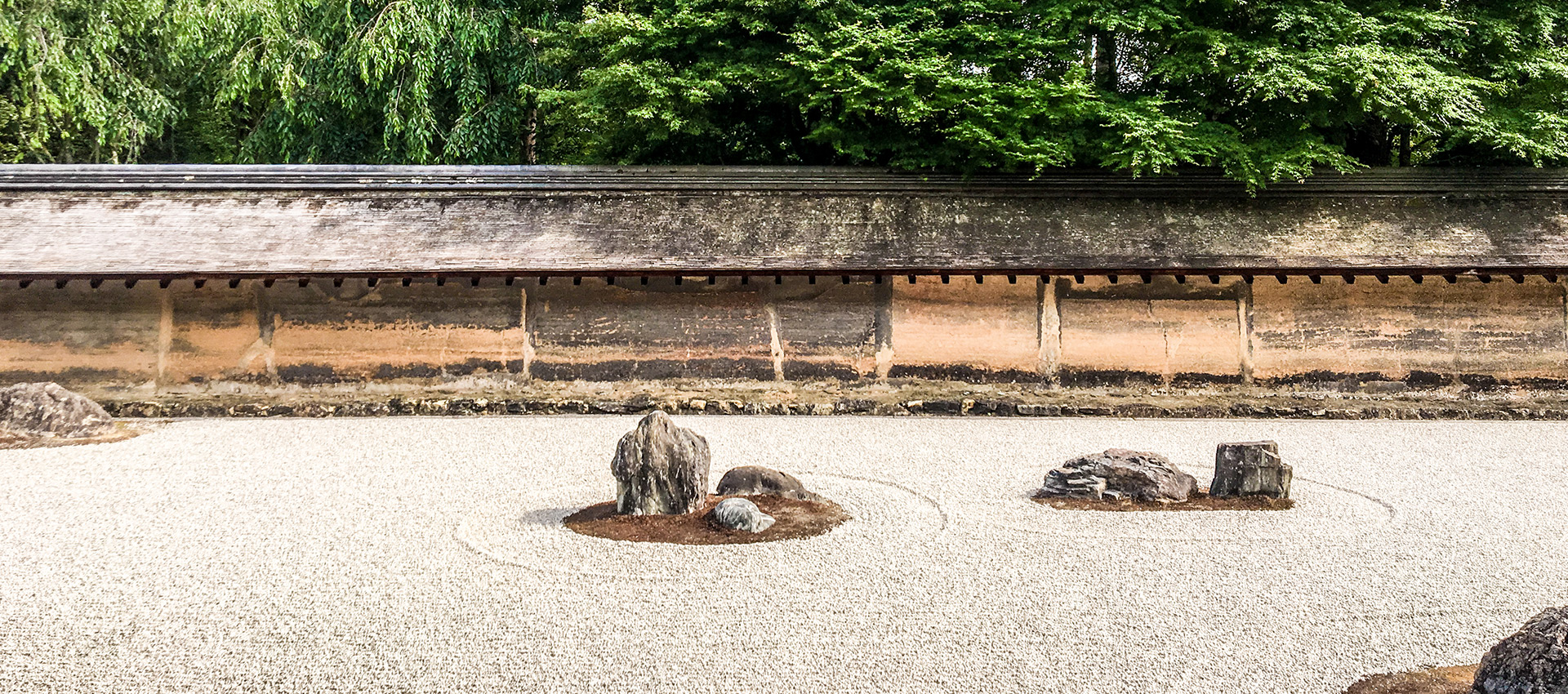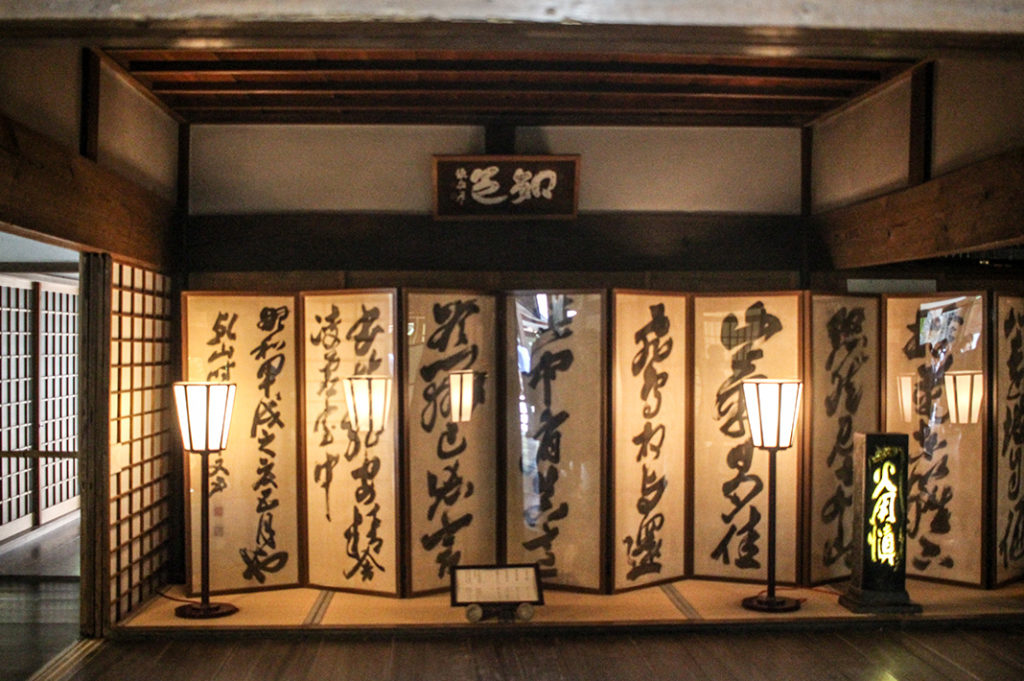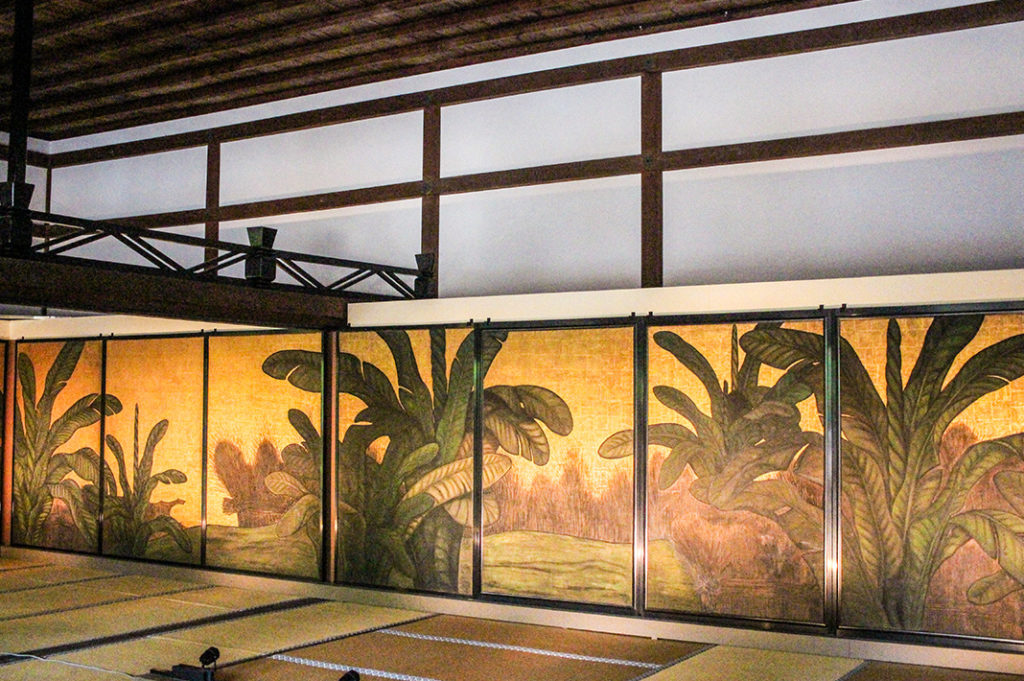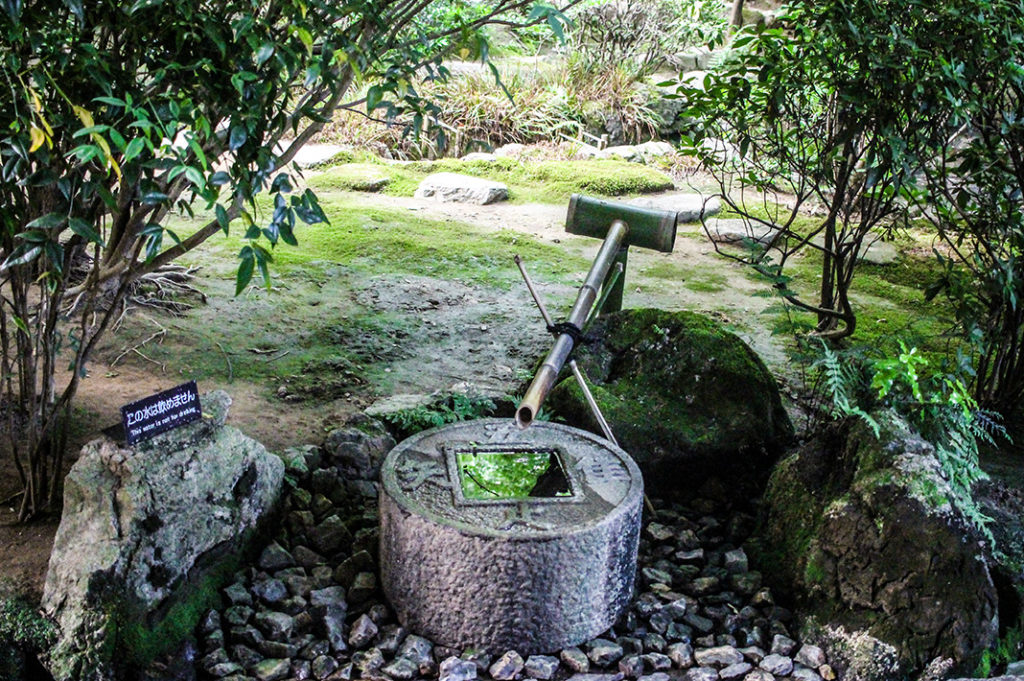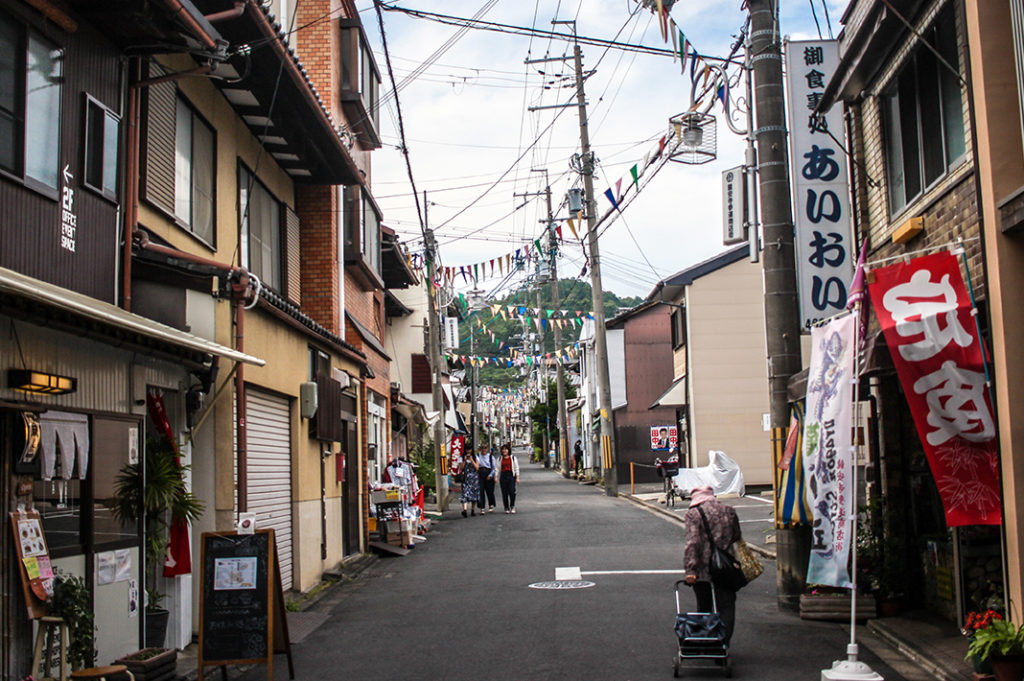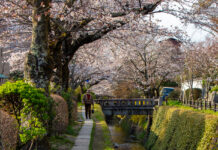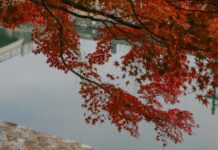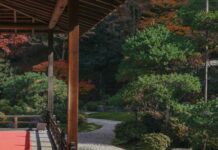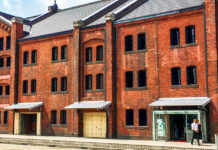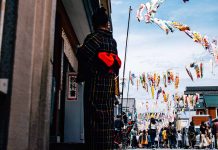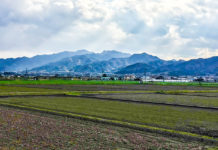Ryoanji Temple is a UNESCO listed Zen Buddhist Temple home to Japan’s most famous rock garden. Nobody knows who designed the ancient plot, and visitors come in droves to try and unlock its untold mysteries. The temple, though previously the villa of a wealthy aristocrat, dates all the way back to 1450 and is of the Myoshinji School of the Rinzai Sect. Set amongst picture-perfect grounds full of ponds, trees and rocks, and with an on-site Tofu restaurant, Ryoanji is a charming way to spend a few hours in Kyoto.
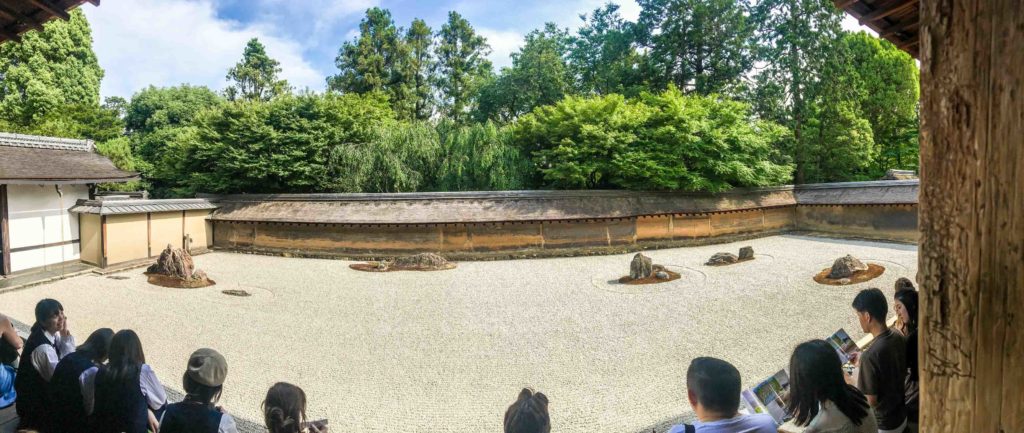
UNESCO Listed Since 1994
Ryoanji Temple received UNESCO World Heritage Status in 1994 and is one of the Historic Monuments of Ancient Kyoto. Fittingly, this status also extends to its mysterious dry rock garden. On the way to said garden, visitors have the chance to enjoy the temple grounds a little. Just past the entrance, you’ll soon spot a teahouse, souvenirs as well as public toilets. Moving on, follow the gravel path around the large lily-padded pond and under the low hanging boughs of maple trees. Keep following signs for the rock garden and enjoy the view along the way.
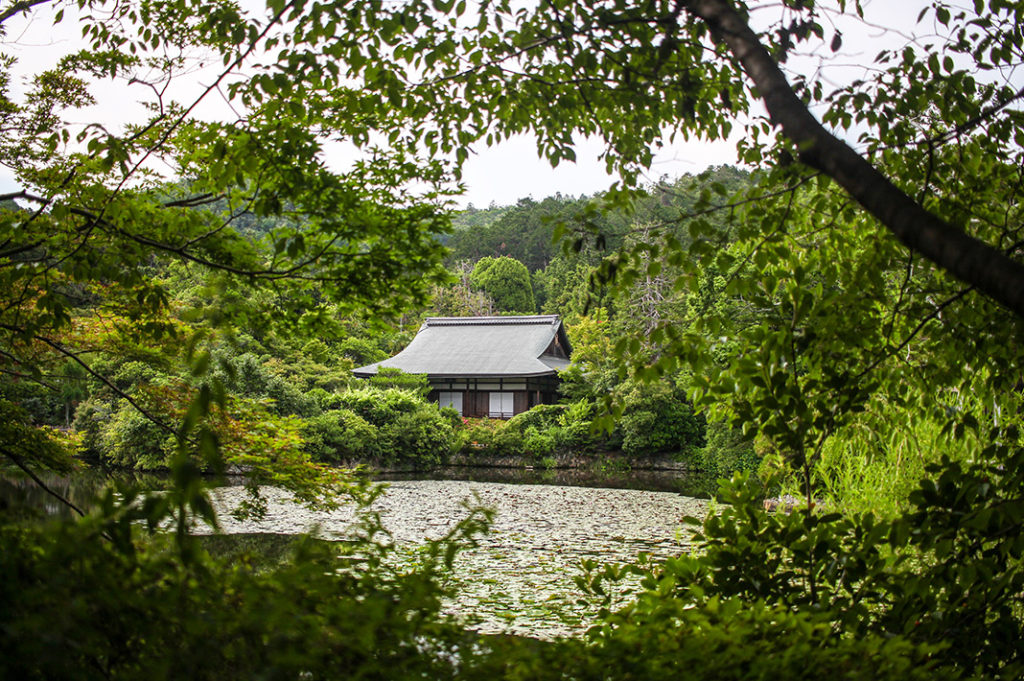
The Hojo
Head up the large stone staircase, stash your shoes and step into the cool shade of the Hojo.
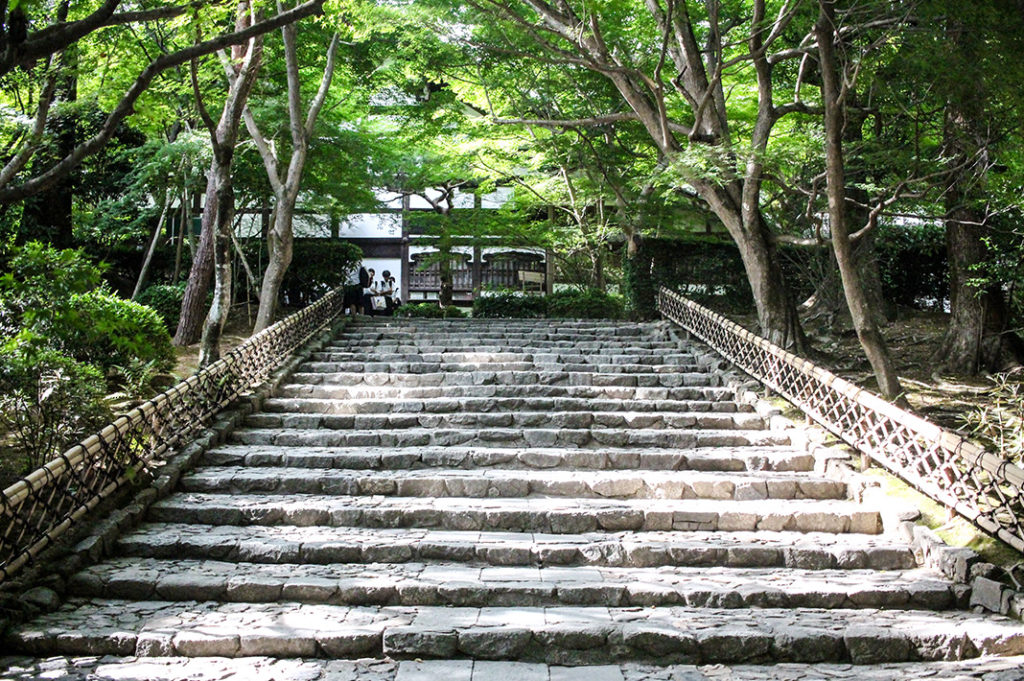
This building dates back to 1606 and was the home of the high priest of the temple. Inside you can peruse the usual incense, charms and trinkets available for purchase.
At the time of my visit, a number of wall panels were on display, featuring paintings of banana trees—once very exotic in Japan. Though the building itself is beautiful, it’s the garden everyone comes to see.
The Secrets of the Rock Garden
On the deck of the Hojo, people sit in rows to contemplate the dry rock garden before them. The 248 square meter space is a stark pebbled design featuring 15 large rocks in a few clusters.
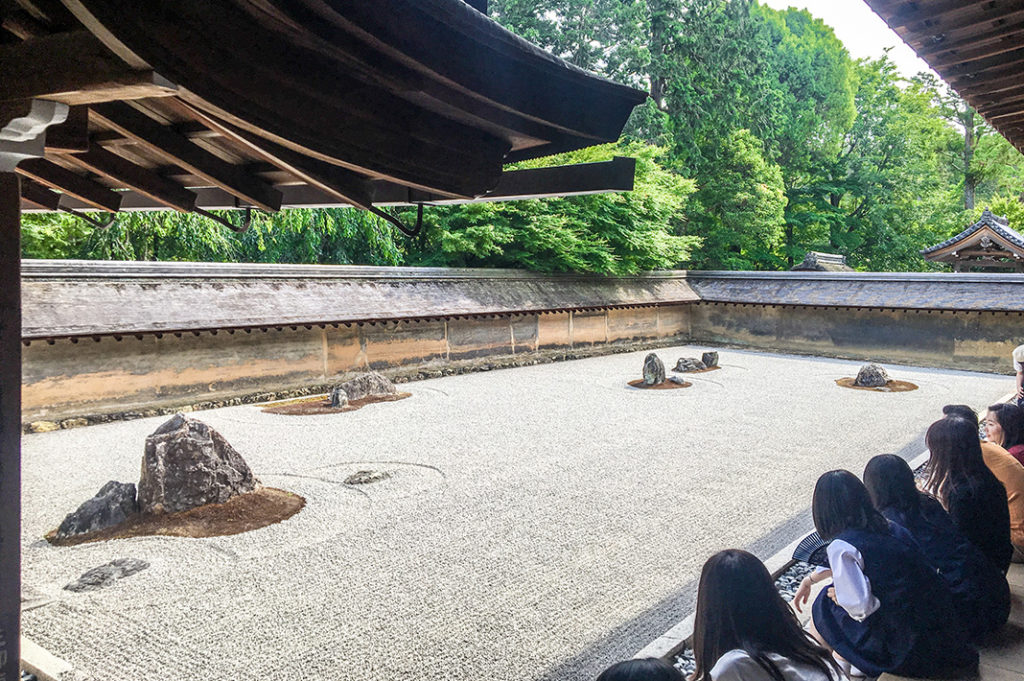
It may not look like much, but it has captured the imaginations of countless onlookers. Here’s the scoop…nobody knows who designed it or when, or what it even symbolises. Naturally, theories abound including mountains peeping through clouds, islands in the sea and even a join-the-dot kanji character. Many believe that it may be a riddle, designed to entertain and delight people in the days before TV and mystery novels.
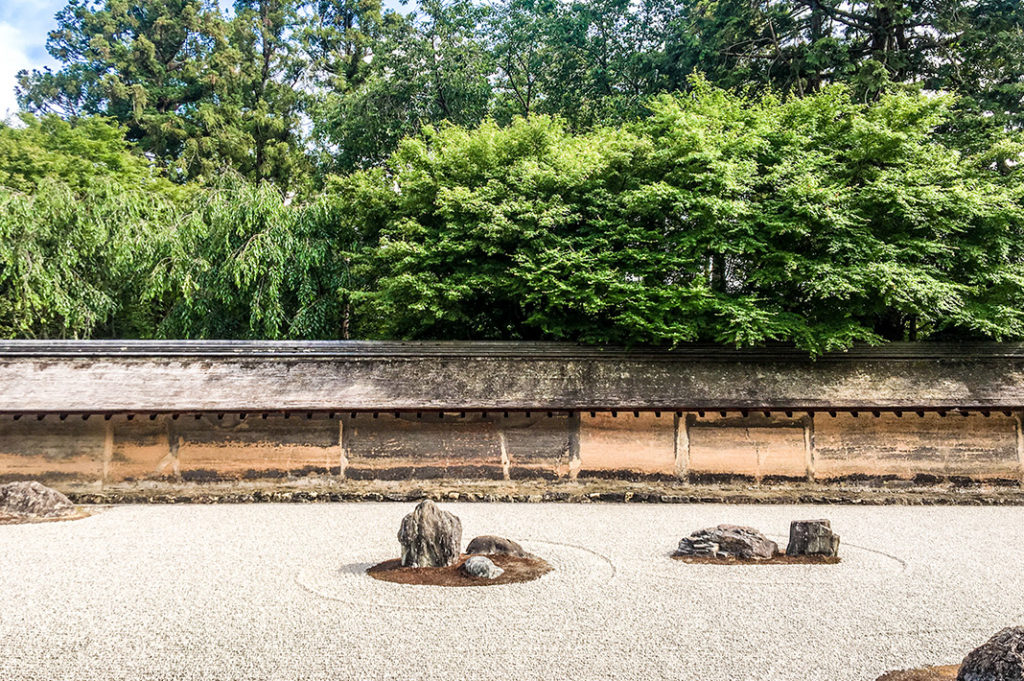
Adding to the riddle theory is the fact that no matter where you sit, there is always at least one rock hidden from view. All around me, people were pointing and muttering “one, two, three, four…” trying to bust the myth. Here’s a trick, head inside and check out the small model replica of the garden, and you’ll be able to spot all 15.
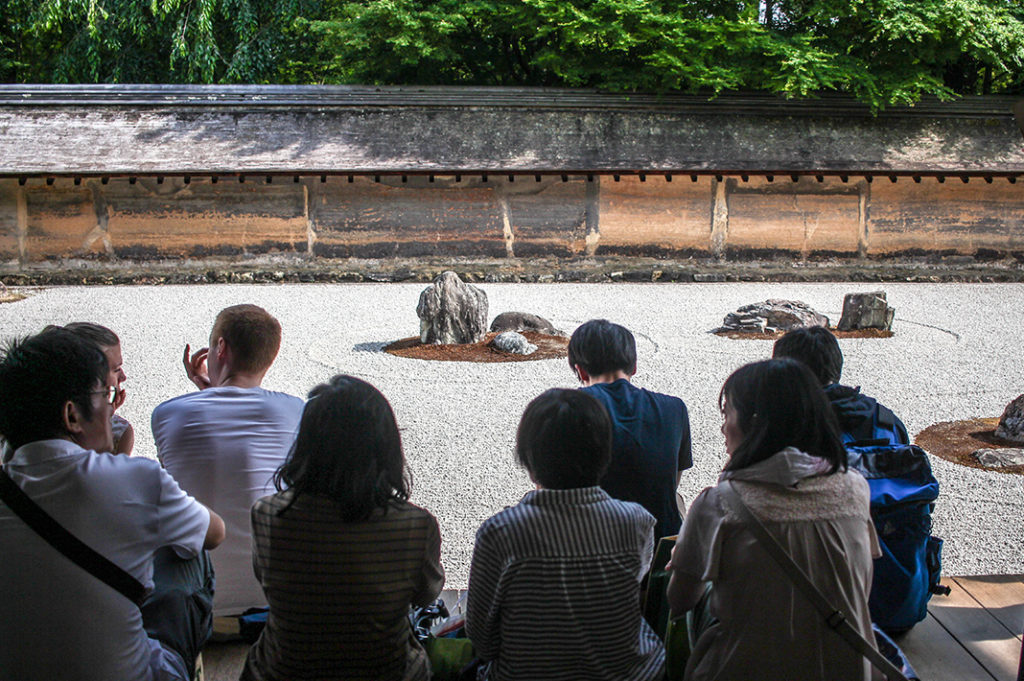
Moreover, the garden was created on an almost imperceptible angle to allow for drainage. Plus, the right-hand wall is also on an angle which in effect creates the optical illusion of depth.
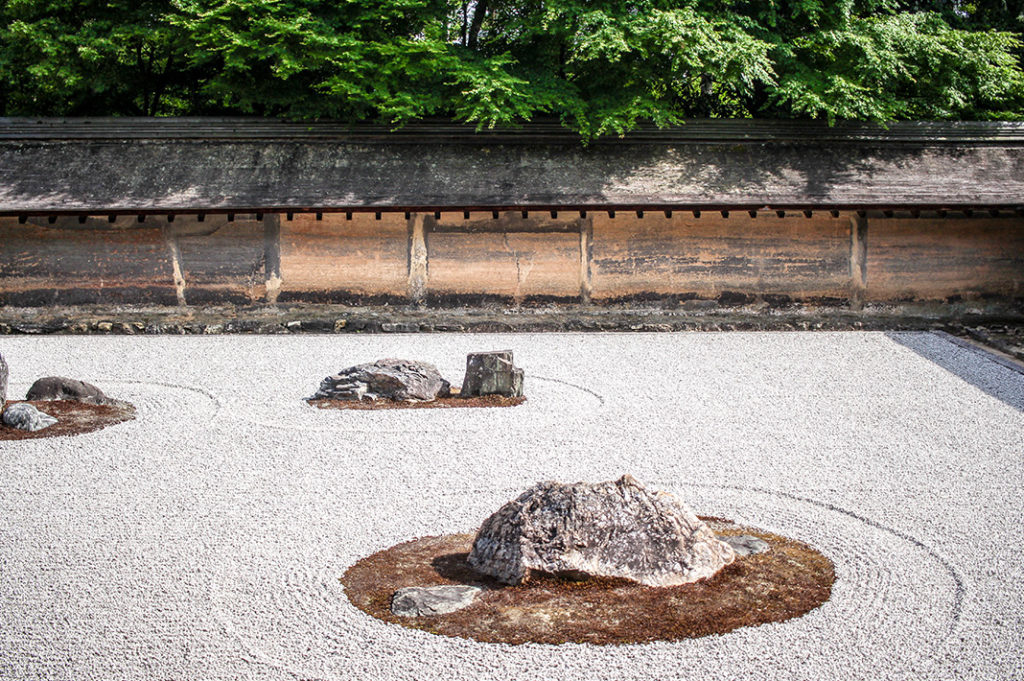
The walls themselves are another interesting feature; they are called earthen-oil walls as they are made from a combination of clay and rapeseed oil.
Around the corner, you’ll spot a stone basin in the shade which almost resembles a 5 yen coin. Funnily enough, the kanji inscription on top translates to ‘freedom from greed ensures a peaceful life’.
Though I may not have unlocked the mysteries of the garden, I still enjoyed the tranquil atmosphere and beauty of Ryoanji. Definitely worth a visit.
Accessing Ryoanji
You can access Ryoanji in many ways. As it is located fairly close to Kinkakuji Temple, it can be reached on foot or by a short bus ride. From Arashiyama, take the Randen train to Ryoanji Station and walk a pleasant eight minutes past quaint shops and houses.
From Kyoto Station, you can take a JR bus (30 minutes, 230 yen) which run every 15 to 30 minutes. The bus is covered by the JR Pass, JR Kansai Area Pass, JR Kansai Wide Area Pass as well as a few others. However, visitors should note that it is not covered by the one-day city bus pass.
Ryoanji Temple
Address: 13 Ryoanji Goryonoshitacho, Ukyo Ward, Kyoto, 616-8001
Open: 8:00a.m.–5:00p.m. (7 days per week)
URL: http://www.ryoanji.jp/smph/eng/
Post by Japan Journeys.



